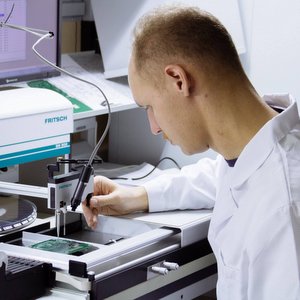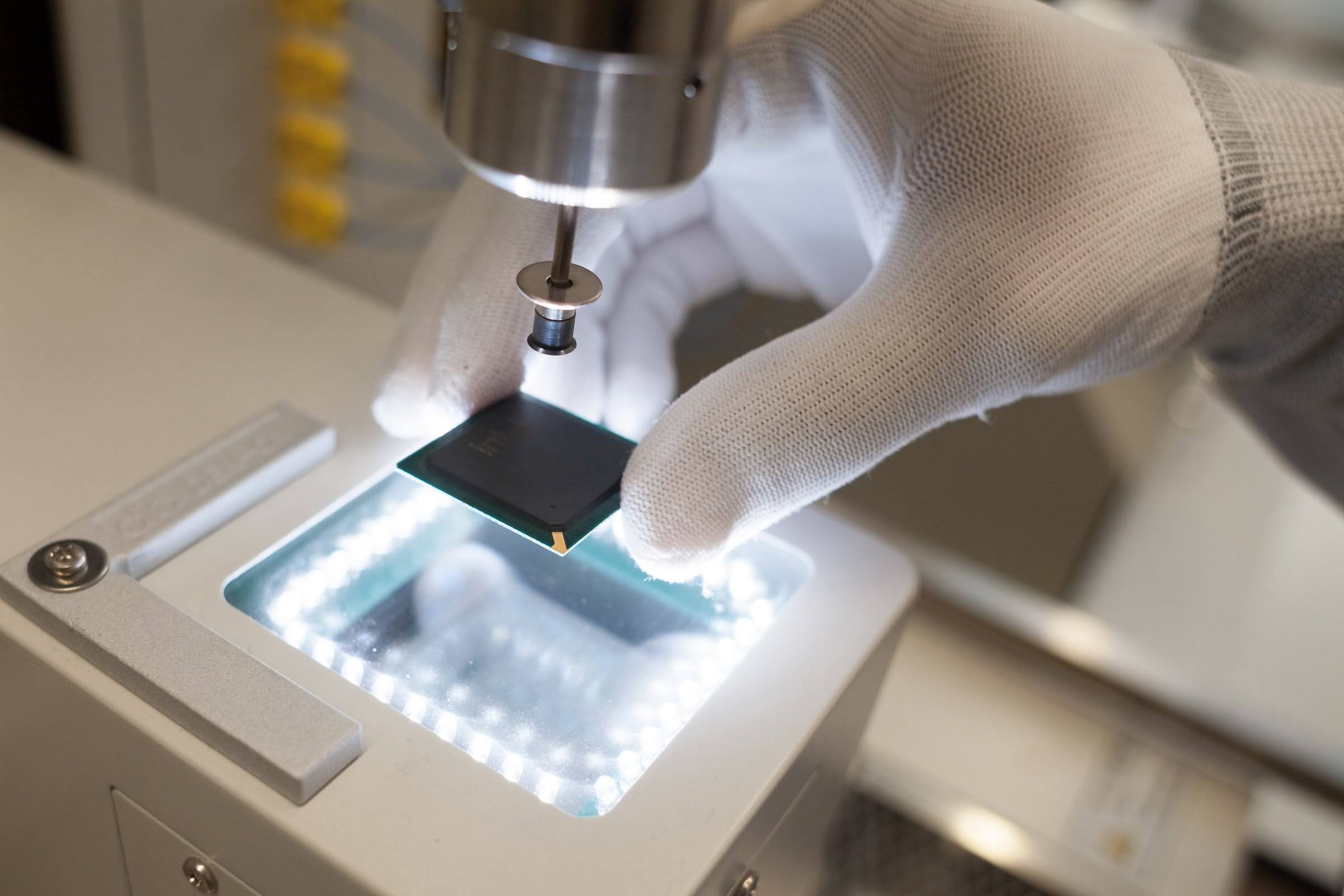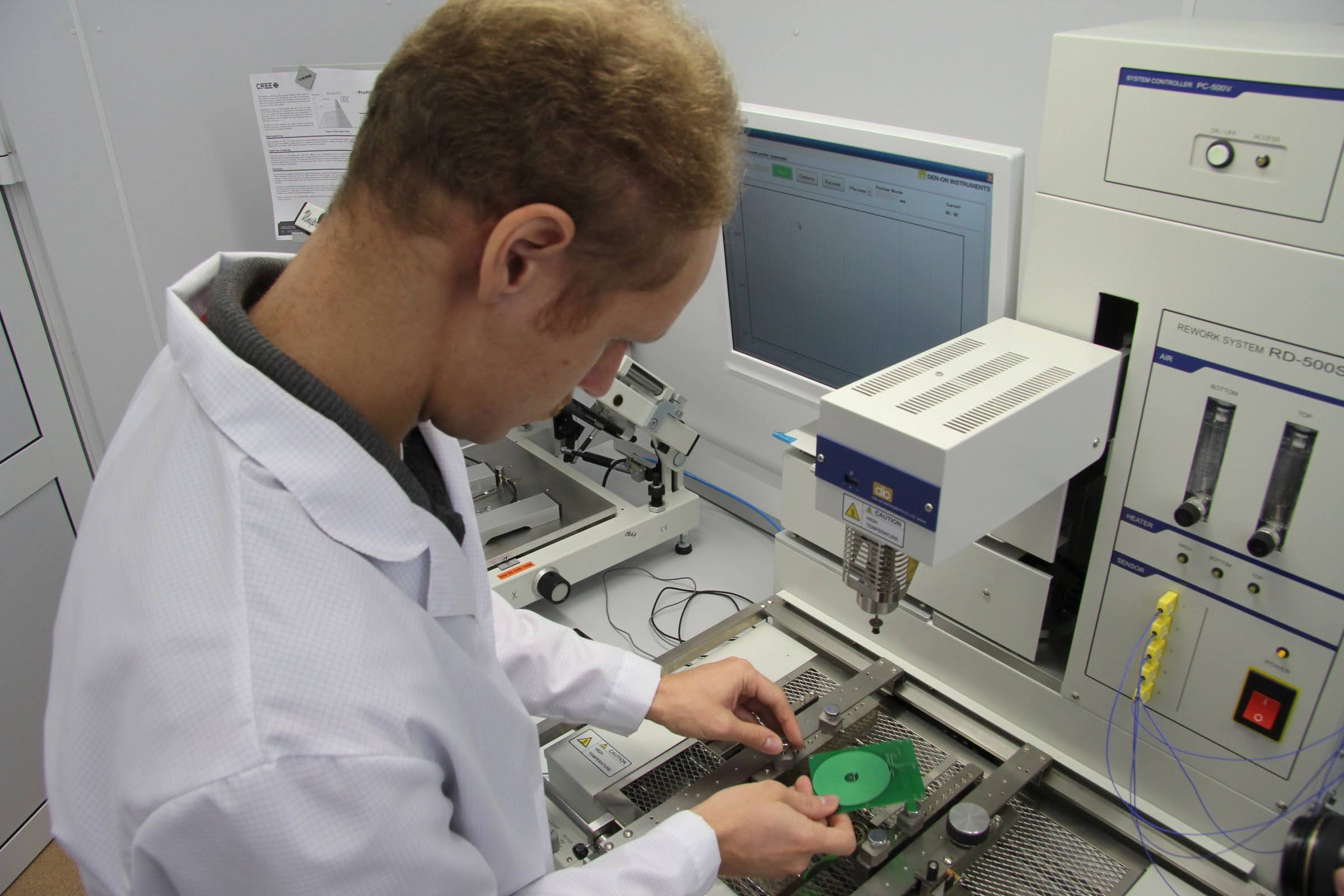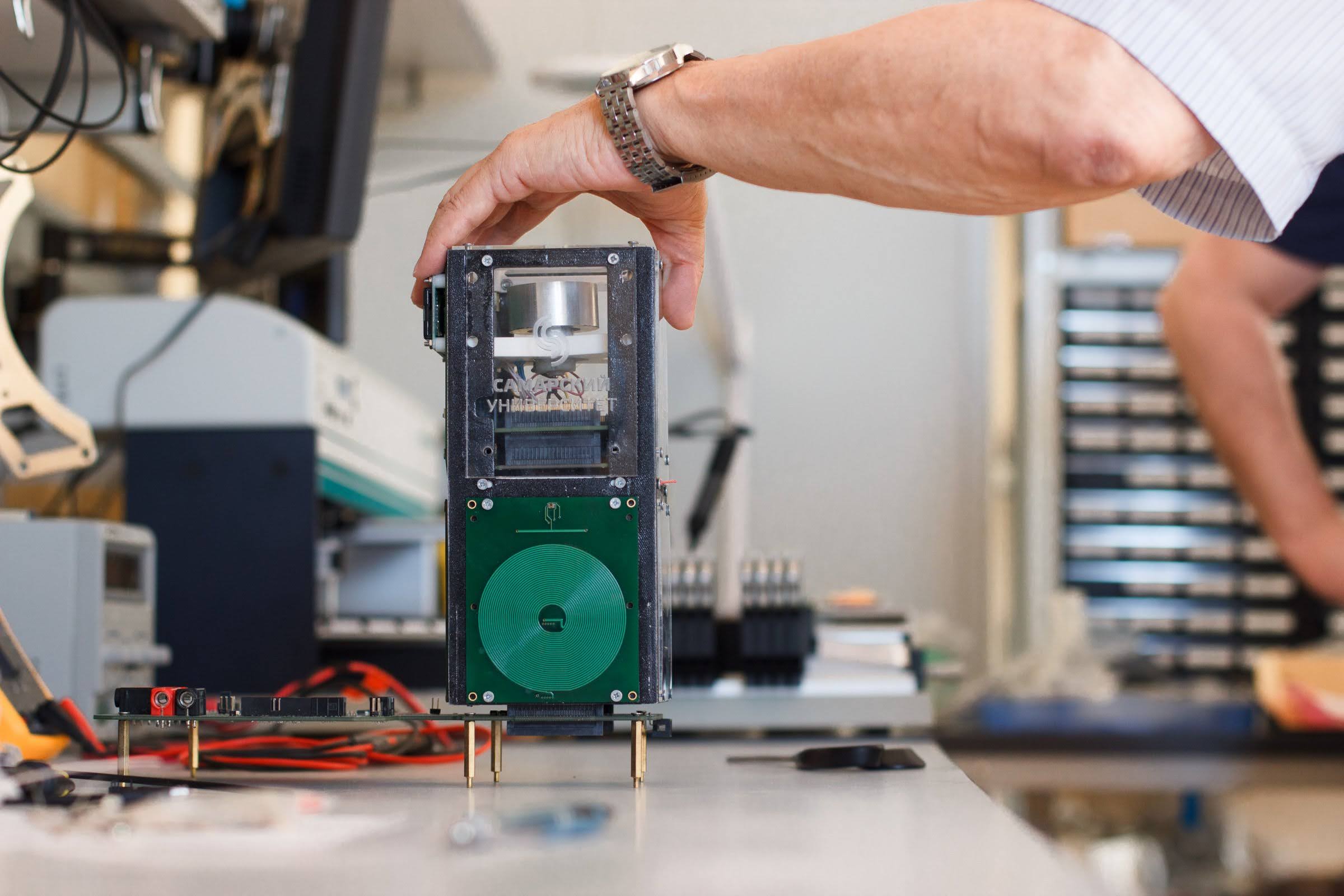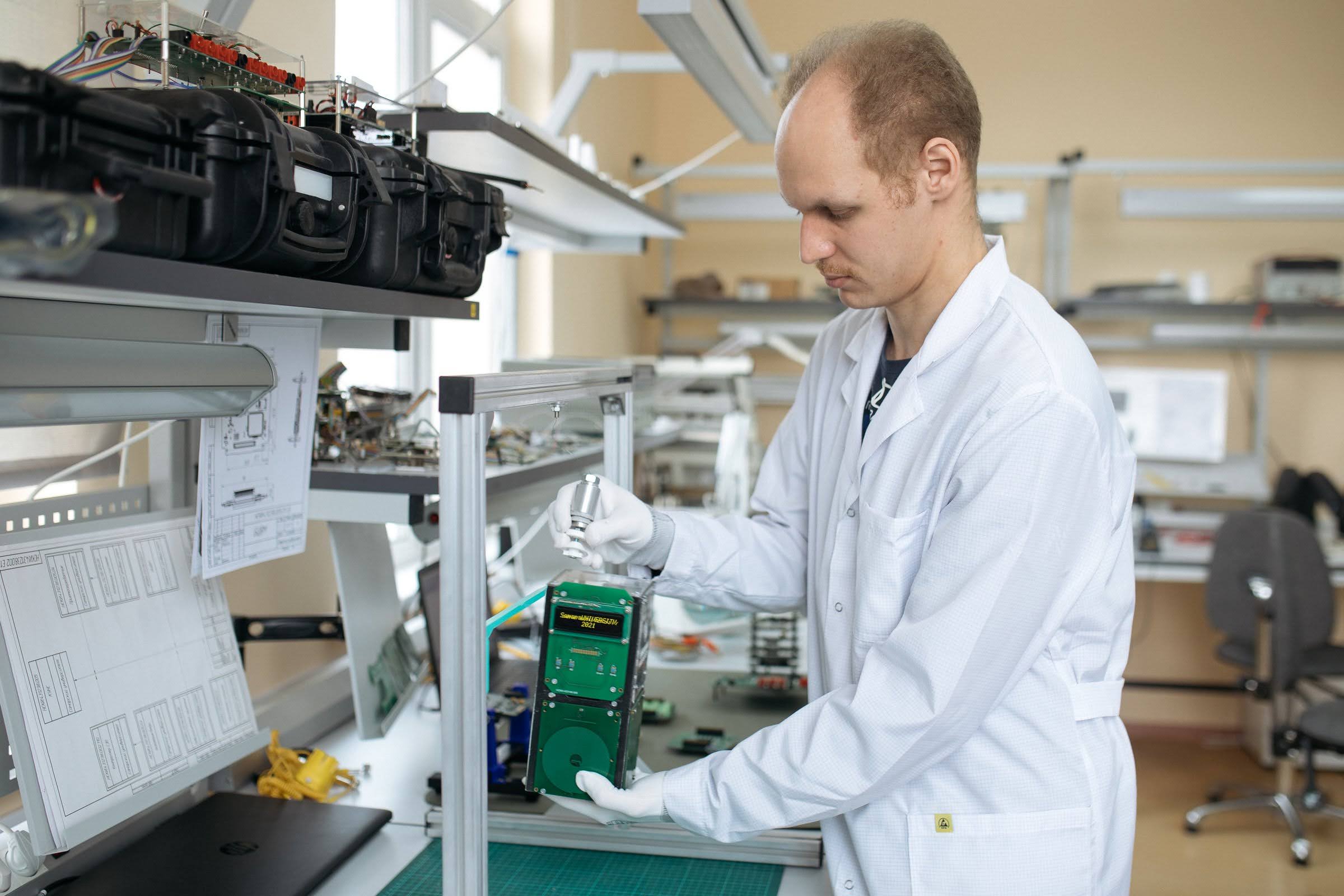Samara National Research University scientists have completed the development of SamSat-ION nanosatellite designed for research of the Earth’s ionosphere (1). The spacecraft was developed by the Inter-University Department of Space Research and R&D laboratory "Advanced fundamental and applied nanosatellite-based space research" in the framework of the University’s participation in the consortium of the Russian universities and scientific organizations (2).
"Samara University has completed the development of SamSat-ION nanosatellite. While in orbit, the spacecraft will obtain scientific data that the scientists need to study wave processes in the plasma along its flight trajectory and perform tomography of the upper ionosphere. Fresh data on the state of ionosphere are vital for such industries as satellite communication, navigation, meteorology, and are especially relevant for polar and subpolar regions where ionospheric disturbances from solar activity are quite significant. Therefore, the data obtained by the nanosatellite will be indispensable to further progress in the Arctic and Antarctic exploration. Presently, the nanosatellite assembly works are heading towards completion; ground tests and software debugging are underway. Notably, all onboard systems have been developed and manufactured in the Department’s Centre for nanosatellite technologies. We expect to complete all works by the end of May," shared the head of the Samara University Inter-University Department of Space Research, Professor Igor Belokonov.
One of the outstanding features of the satellite is its unique research apparatus. SamSat-ION will carry a navigation receiver, a remote magnetometer on an innovatively designed arm, and a plasma parameter sensor developed jointly by Samara University and Institute of Applied Physics of the Russian Academy of Sciences. The sensor will measure the characteristics of plasma along the orbit of the satellite.
"Remotely designed elements always work to improve nanosatellite functionality. Along with the unfolding antenna system, SamSat-ION has a remote magnetometer and a sensitive element of the plasma parameter sensor. Reliable unfolding of the structure has been ensured by our original technical solution which we have patented," Igor Belokonov explained.
The ground tests of SamSat-ION will take place at the Nanosatellite Testing and Development Centre of Samara University. The spacecraft will have to endure simulated orbital conditions in the thermal vacuum chamber and conditions of the active section in the course of an orbital launch by the launch vehicle in the vibrodynamic test bench. The stabilization system will be tested in a magnetic test bench, and the power supply system – using the Sun simulator. A robotic manipulator will help calibrate measuring instruments of the nanosatellite. A unique test bench determining the inertial characteristics and position of the centre of mass of the satellite will ensure achievement of the required stabilized position in space in a more efficient way. This test bench is a patented solution developed by the scientists of the Inter-University Department of Space Research.
The nanosatellite is expected to be launched into a solar synchronous orbit at the altitude of about 550 km. According to the preliminary calculations, the satellite’s service life in such an orbit will be approximately 19 years. According to Igor Belokonov, Samara University has already sent an application to Roscosmos, attaching the necessary documents to participate in UniverSat program (3). The program provides an opportunity for a space launch free of charge for participants. The University’s application is supported by the Russian Ministry of Science and Higher Education. The launch may take place as early as this year.
During the flight, an additional experiment will be held: the possibility of ionospheric tomography based on the signals of the Russian satellite navigation system GLONASS will be tested onboard the nanosatellite. The experiment was initiated by the research within the framework of a joint grant provided by the Russian Foundation for Basic Research and the Belarusian Foundation for Fundamental Research titled "Theoretical Foundations of Studying Wave Processes and Phenomena in the Ionosphere Using Signals of Satellite Radio Navigation Systems". This will be the first joint scientific project between Russia and Belarus implemented at Samara University.
In the course of implementation of the project, the scientists aim to develop the methods and means for processing and transformation of information provided by the Russian satellite navigation system GLONASS, in order to make the dynamic models of the state of ionosphere more detailed. This solution will be crucial for predicting possible failures in operation of radio communication systems, correcting errors and improving the accuracy of positioning systems on Earth. Besides, the understanding of physical processes occurring in the ionosphere opens up opportunities for new promising technologies for information transmission.
For reference
1) Ionosphere is the upper layer of the Earth's atmosphere saturated with charged particles, whose concentration depends on the solar activity and affects the propagation of radio waves, having a noticeable impact on performance of various technical systems. Knowledge of the state of ionosphere plays a central role in satellite navigation and communication.
2) The agreement on the consortium of Russian universities and scientific organizations to create a constellation of nanosatellites for studying the Earth's ionosphere was concluded in 2018. The consortium was initiated by Samara University. The idea to bring leading Russian universities together for the joint study of ionosphere was supported by the Institute of Applied Geophysics of the Russian Meteorological Agency and the Space Research Institute of the RAS. The consortium presently includes nine universities, two small companies and Institute of Physics of the Earth of the RAS. In 2021, UE Geoinformation Systems of the National Academy of Sciences of the Republic of Belarus joined the consortium, bringing the joint project to international level.
3) UniverSat is a Russian program for launching small spacecraft developed at Russian universities for educational and scientific purposes. The program is implemented by the State Corporation Roscosmos. The launch of small research spacecraft using Russian launch vehicles is implemented as part of Russia's 2016–2025 Federal Space Program. UniverSat is the main Russian program for the launch of cubsat nanosatellites serving the purposes of the Russian Meteorological Agency and the Ministry of Transport of Russia.
 RU
RU  EN
EN  CN
CN  ES
ES 